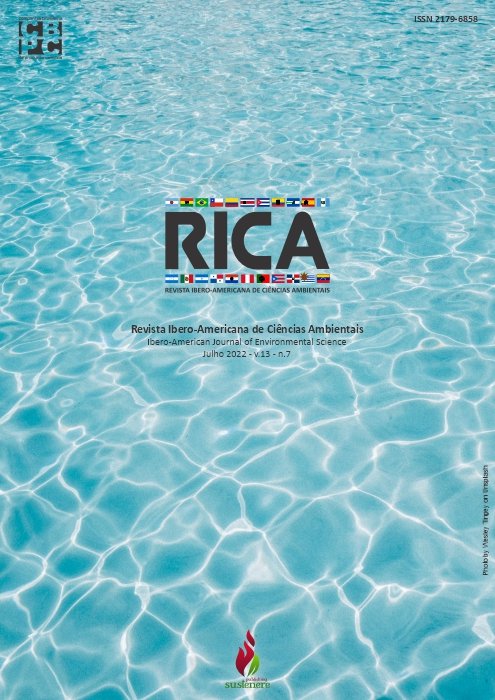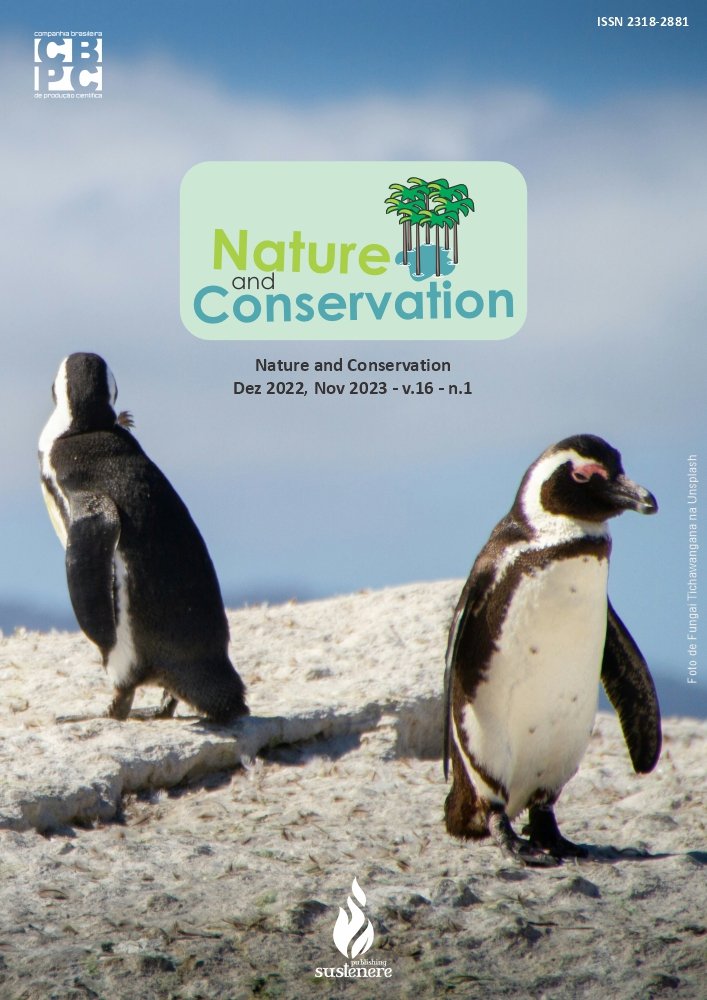Growth and reproductive phenology of Araucaria angustifolia around a hydroelectric reservoir in Paraná
DOI:
https://doi.org/10.6008/CBPC2179-6858.2022.007.0002Keywords:
Monthly increment, Phenophases, Meteorological variables, Artificial lakesAbstract
The objective of the study was to analyze whether the growth and reproductive phenology of Araucaria angustifolia differ as a function of variation in environmental characteristics at different distances from the shore of a hydroelectric reservoir in southern Brazil. Two areas were selected, one near the reservoir ("proximal") and the other at 8 km from the shore ("distal"), respectively in the municipalities of Bituruna and Pinhão, PR. The reproductive phenology and circumference increment by means of dendrometer bands were monitored monthly, age determination and bark thickness measurement of 12 tree individuals in each area, as well as data collection of meteorological variables. The phenophases of immature androstrobiles, mature androstrobiles, senescent strobiles, immature gynostrobiles and maturation/pinecone fall were analyzed. The circumference increment was represented by boxplots, the current annual increment and accumulated increment were calculated, and related to meteorological variables, age, and bark thickness by Spearman correlation. The phenophase activity index was analyzed using circular statistics, and the Spearman correlation of these with increment and meteorological variables. The growth was significantly different between areas, being greater in the proximal area. The male and female reproductive phenophases did not differ between the areas, indicating that the period of occurrence and activity of individuals manifesting the phenophases was similar between the environments. The monthly increment was positively correlated with precipitation, average and minimum temperature in the areas, while the phenophases were more influenced by the variables average solar radiation and the average, minimum and maximum temperatures. In the proximal area, we found a positive correlation of the average circumference increment with bark thickness and age was observed. Higher correlations with temperature in the proximal area were associated with the influence of altitude and environmental changes associated with reservoir formation. We conclude that, on a local scale, the individuals presented distinct rates of increase, but similar phenological behavior, being influenced by environmental variables.
Downloads
Downloads
Published
Issue
Section
License
Copyright (c) 2023 Ibero-American Journal of Environmental Sciences

This work is licensed under a Creative Commons Attribution-NonCommercial-NoDerivatives 4.0 International License.
The CBPC - Companhia Brasileira de Produção Científica (Brazil CNPJ: 11.221.422/0001-03) the material rights of the published works. The rights relate to the publication of the work anywhere in the world, including rights to renewals, expansions and dissemination of the contribution, as well as other subsidiary rights. All electronically published works may subsequently be published in printed collections under the coordination of this company and / or its partners. The authors preserve the copyright, but are not allowed to publish the contribution in another medium, printed or digital, in Portuguese or in translation.









